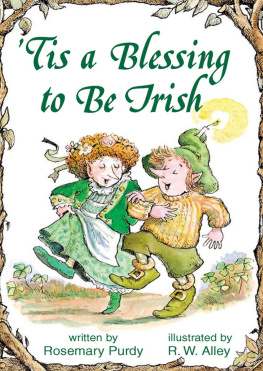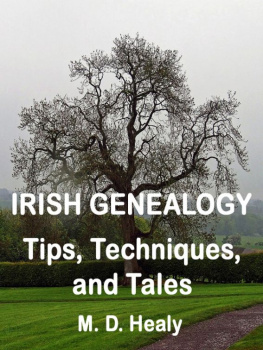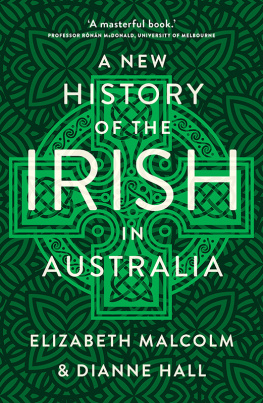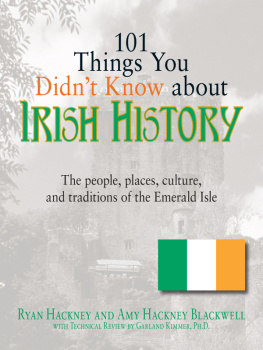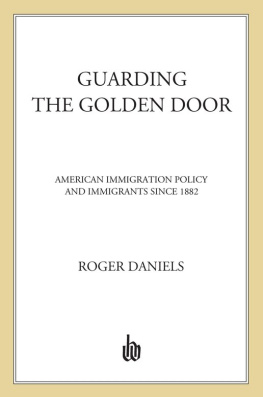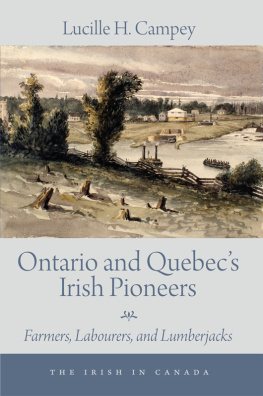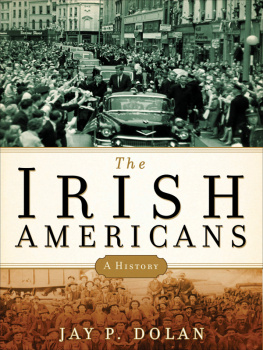UNINTENDED CONSEQUENCES
Ray OHanlon takes an unflinching look at more than 100 years of American immigration policy broadly and how it affects the Irish specifically, particularly since the passage of the Immigration and Nationality Act of 1965. With clarity and context, he provides an essential chronology of the many battles waged to correct the consequences of that legislation and its impact on Irish America. His assessment is as eye-opening as it is sobering, squarely assigning credit and blame for the results where they belong.
Linda Dowling Almeida , author of Irish Immigrants in New York City: 19451995 , Glucksman Ireland House, New York University
Ray OHanlon remains the pre-eminent chronicler of the Irish American experience, in large part because for him it has never been purely an academic exercise, but a lived one, experienced first-hand as an Irish person who made his home and his life in America. His grasp of history informs a nuanced understanding of the modern, real-time Irish America.
Boston Globe columnist Kevin Cullen
Ray OHanlon plays the role of historian and fly-on-the-wall journalist in this well-researched narrative about immigration, politics and culture. It is an Irish story and an American story, told by one of Irish Americas foremost observers.
Dr Terry Golway , journalist, author, historian, and editor of Being New York, Being Irish
Unintended Consequences provides an essential chronology on the history of U.S. immigration policy as it pertains to the Irish. Full of fascinating insights, OHanlons journalistic style makes it an engaging read about an era that has been rather understudied to date.
Miriam Nyhan Grey PhD , Global Coordinator for Irish Studies, Glucksman Ireland House, New York University
Unintended Consequences is meticulously researched and beautifully written. The legislation that systematically closed the door to Irish immigrants is skilfully juxtaposed against multiple delightful vignettes that remind us of the humanity and diversity of the emigration experience over the last seven decades.
Professor Christine Kinealy , Director, Irelands Great Hunger Institute, Quinnipiac University, Connecticut
For Phyllis, mother of an emigrant,
for Ann, descendant of immigrants.
Ray OHanlon is the editor of the New York City-published Irish Echo newspaper. A native of Dublin, OHanlon has reported from four continents in a newspaper career spanning forty-one years. In addition to his work as a reporter and editor, OHanlon has been a frequent contributor to US, Irish and British media outlets reporting on Ireland, Irish American affairs, and Anglo-Irish relations. His book, The New Irish Americans (1998) was the recipient of a Washington Irving Book Award, and The South Lawn Plot , his first fiction work, was published in 2011.
UNINTENDED
CONSEQUENCES
THE STORY OF IRISH IMMIGRATION TO THE U.S. AND HOW AMERICAS DOOR WAS CLOSED TO THE IRISH
RAY OHANLON
First published in 2021 by
Merrion Press
10 Georges Street
Newbridge
Co. Kildare
Ireland
www.merrionpress.ie
Ray OHanlon, 2021
9781785373787 (Paper)
9781785373794 (Kindle)
9781785373800 (Epub)
A CIP catalogue record for this book is
available from the British Library.
All rights reserved. No part of this publication may be reproduced, stored in a retrieval system, or transmitted, in any form or by any means (electronic, mechanical, photocopying, recording or
otherwise), without the prior written permission of both
the copyright owner and the publisher of this book.
Typeset in Sabon Lt Std 11/14 pt
Front cover image: President Lyndon B. Johnson signs the 1965 Immigration and Nationality Act into law on Ellis Island.
Photo courtesy of the Lyndon B. Johnson Library Collection/
Yoichi R. Okamoto.
Back cover image: The inspection room on Ellis Island,
New York, c. 1910s.
Unless otherwise stated, images are taken from the
Irish Echo archive, courtesy of the author.
Merrion Press is a member of Publishing Ireland.
Contents
Preface
A s the 1980s proceeded towards the middle of the decade, tens of thousands of mostly young Irish packed their bags and reached for a better life. Leaving behind dashed hopes and economic recession, they would travel to different lands. America would be the land with the greatest economic pull, the brightest of bright lights. Once immigration and customs were behind them, these new Irish plunged into a life in a country that was far from home, yet familiar in so many ways. The American Dream is the property of people the world over, or so the world had been led to believe.
But America was changing, and in ways not necessarily seen or sensed by the arriving Irish. Their admission to the United States was only a first step. Taking the next steps towards a fully accepted and legal American life, they would hit a problem indeed, multiple problems stemming from acts of Congress that few of the newcomers were aware of to any significant degree, if at all. And yet a political battle on their behalf, one sourced in the first of those congressional measures, the 1965 Immigration and Nationality Act, had already opened. It would resume as a result of another act that came into being in 1986.
My American life was not forced upon me by overwhelmingly negative economic travails. But it has comprised more than half of my life thanks to my wife Lisa, who hails from Americas heartland. That sets me apart from most of those 1980s Irish who made the journey across the Atlantic with hope, fears, sometimes desperation as their traveling companions. My journey has been an easy one compared to those who became undocumented in a land that has, nonetheless, benefited from their presence. This book is dedicated to the undocumented Irish who have stayed the course in the hope of relief from a sensible practice of politics.
I want to pay tribute to those politicians who have faced the immigration issue in a sensible and pragmatic manner. There have been quite a few of them, but never quite enough of them. Some are mentioned in the following pages, and there are others. They come from both parties and not all are Irish American.
Particular mention should be made of Judge John Collins and the American Irish National Immigration Committee (AINIC). Judge Collins has made available his personal account of AINICs story, and for that I am but one who is deeply grateful. I am especially indebted to Conor Graham of Irish Academic Press/Merrion Press for taking just a few moments, during a conversation in New York Universitys Glucksman Ireland House, to give the green light for this project. And thanks, too, to those whose books, writings, thoughts and analyses are drawn upon throughout the chapters.
The years since the 1965 Immigration and Nationality Act, a legislative measure that so radically changed the course of the American Irish story and the broader American story, have been witness to the Herculean efforts of individuals who took up the cause of legal Irish access to the United States under the banner of AINIC, the Irish Immigration Reform Movement (IIRM), the Irish Lobby for Immigration Reform (ILIR) and others. Those named groups were ad hoc, formed to meet particular challenges at particular times. ILIR continues to battle on the front lines. Throughout all the years of battling, the work of the Ancient Order of Hibernians (AOH) has been a constant. The work of the more engaged Irish politicians and a constantly engaged Irish Diplomatic Corps deserves recognition.


